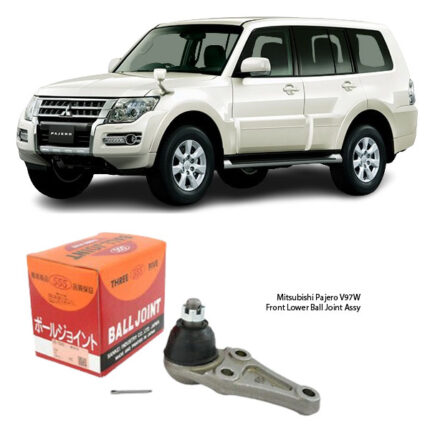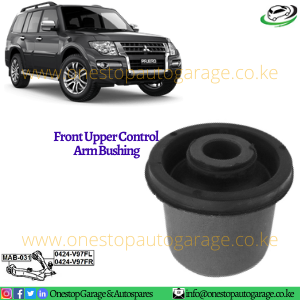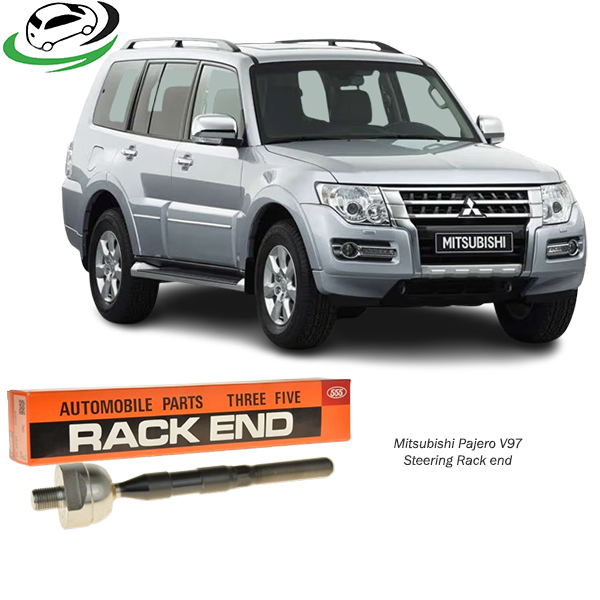-17%
Get Mitsubishi Pajero V97/ V87 Steering Rack end SR7840
The steering rack end, often referred to simply as the “rack end” or “tie rod end,” is a critical component in the steering system of a vehicle. It connects the steering rack (or steering gear) to the wheel assembly, ensuring that driver inputs via the steering wheel translate accurately to the wheels, enabling directional control. The steering rack end’s robust design allows it to withstand continuous use, road vibrations, and varying road conditions, playing a significant role in safe and responsive vehicle handling.
2. Understanding the Steering System
To fully appreciate the role of the steering rack end, it’s essential to understand how it interacts within the broader steering system:
- Steering Wheel and Column: When the driver turns the steering wheel, the steering column transmits the motion down to the steering rack.
- Steering Rack and Pinion Gear: The rack and pinion gear converts rotational motion into lateral motion, enabling the wheels to turn left or right.
- Rack Ends (Tie Rod Ends): These connect the steering rack to the wheel knuckles, directly impacting wheel alignment and direction.
The rack ends serve as the final linkage in the steering system, allowing the precise movement necessary to guide the vehicle smoothly.
3. Function of Steering Rack Ends
The steering rack end has three primary functions:
- Transmitting Steering Input: It acts as the bridge between the steering rack and the wheels, allowing driver inputs to reach the wheels precisely.
- Maintaining Wheel Alignment: Rack ends help maintain the proper alignment of the front wheels, critical for accurate steering and minimizing tire wear.
- Absorbing Vibration and Road Shock: The rack end contains a ball joint that allows for flexible movement and absorbs vibrations and shocks, helping the steering system handle rough road surfaces without damaging components.
4. Structure and Components of Steering Rack Ends
The typical steering rack end consists of several key elements:
- Inner Tie Rod: Connected to the steering rack, the inner tie rod moves laterally as the steering wheel turns.
- Outer Tie Rod End: This component links the inner tie rod to the wheel hub and typically contains a ball joint that allows the wheel to pivot.
- Ball Joint: This joint provides a flexible, swivel connection between the rack end and the wheel hub, ensuring smooth wheel movement without excessive rigidity.
- Threaded End: The threaded end of the tie rod allows for length adjustments, enabling precise wheel alignment to optimize handling and tire wear.
The quality and durability of the materials used in the rack end are essential since these parts undergo significant stress, particularly when driving on rough or uneven surfaces.
5. Types of Steering Rack Ends
Different types of steering rack ends can vary based on the vehicle’s steering system, typically falling into two main categories:
- Fixed-Length Rack Ends: Commonly found in basic vehicle steering systems, fixed-length rack ends are straightforward and generally less expensive. However, they lack adjustability, limiting precision.
- Adjustable Rack Ends: These are typically seen in performance vehicles or vehicles with adjustable alignment needs. Adjustable rack ends allow precise calibration, improving handling and reducing tire wear by optimizing alignment.
6. Benefits of Steering Rack Ends
The rack end’s role within the steering system provides several benefits:
- Enhanced Steering Control and Stability: Rack ends contribute to accurate steering control, keeping the vehicle stable, especially when navigating sharp turns.
- Increased Safety: Properly functioning rack ends reduce the risk of alignment issues and poor steering response, increasing safety during driving.
- Reduced Tire Wear: Properly aligned wheels mean that tires wear evenly, prolonging their lifespan and enhancing traction.
- Smoother Ride Quality: Rack ends help absorb road shocks and vibrations, contributing to a more comfortable driving experience by reducing the transmission of road irregularities to the driver.
- Improved Fuel Efficiency: By reducing drag caused by misalignment, properly functioning rack ends help improve fuel efficiency over time.
7. Signs of Worn or Damaged Steering Rack Ends
Rack ends undergo constant use, so they are susceptible to wear over time. Some common signs that indicate it may be time to inspect or replace the steering rack ends include:
- Loose or Unresponsive Steering: If the steering feels loose or the wheels don’t respond as expected to steering input, worn rack ends could be the cause.
- Clunking or Knocking Noises: Unusual noises, especially when turning, often indicate issues with the rack end or its ball joint, which may be worn or damaged.
- Uneven or Excessive Tire Wear: Misaligned wheels due to worn rack ends lead to uneven tire wear patterns, requiring more frequent replacements.
- Steering Wheel Vibration: Vibrations in the steering wheel while driving could be a sign that the rack end joints have worn out.
- Vehicle Pulls to One Side: Misalignment due to a faulty rack end can cause the vehicle to drift or pull to one side, compromising control.
8. Maintenance Tips for Steering Rack Ends
Proper care and regular maintenance can extend the lifespan of steering rack ends and ensure safe, responsive handling. Here are some maintenance tips to keep rack ends in optimal condition:
- Regular Inspections: Inspect the steering rack ends regularly, especially if driving frequently on rough roads. Look for signs of wear or damage, particularly in the ball joint and threaded sections.
- Lubrication: While most modern rack ends are sealed and don’t require additional lubrication, checking for dirt buildup and applying a protective lubricant can help in older or exposed systems.
- Alignment Checks: Regular wheel alignment checks are essential for maintaining even tire wear and preventing excess strain on the rack ends. Have the alignment checked anytime the rack ends are replaced or after hitting a large pothole.
- Replace in Pairs: For balanced handling and even wear, it’s generally recommended to replace both left and right rack ends simultaneously, even if only one is visibly damaged.
- Monitor Tire Condition: Uneven tire wear often points to an alignment issue or rack end wear, so keeping an eye on your tires can provide early warning signs of potential rack end issues.
9. Replacement and Installation of Steering Rack Ends
Replacing steering rack ends can be complex and usually requires a professional mechanic, as it involves disassembly of the steering system and realignment. Here’s an overview of the process:
- Lifting the Vehicle: To access the steering components, the vehicle is safely lifted and secured on a jack stand.
- Removing the Wheel and Outer Tie Rod: The mechanic removes the wheels and then detaches the outer tie rod to access the inner tie rod.
- Replacing the Rack End: The old rack end is unscrewed and removed. The new rack end is then screwed in and secured with appropriate adjustments to match the alignment.
- Aligning the Wheels: After installation, the mechanic will ensure proper alignment. This step is crucial as it ensures the vehicle’s handling remains balanced and safe.
10. Common Issues with Steering Rack Ends
Rack ends are vulnerable to several issues, many of which stem from wear and tear or exposure to harsh driving conditions:
- Ball Joint Wear: The ball joint in the rack end often experiences the most wear due to constant motion and impact, leading to potential steering looseness or vibration.
- Corrosion and Rust: Exposed to moisture and road salts, rack ends can rust over time, compromising structural integrity.
- Thread Stripping: When rack ends are adjusted or replaced, improper handling can strip the threads, leading to weakened connections and potential steering misalignment.
- Seal Deterioration: In sealed rack ends, wear on the seals can allow dirt and moisture to enter, accelerating wear and leading to potential failure.
11. Improving Rack End Longevity
To get the most out of your steering rack ends, follow these best practices:
- Avoid Rough Driving Conditions: Limit driving on very rough or off-road terrain if possible to reduce stress on the steering components.
- Check Alignment After Pothole Impacts: Large impacts, like hitting potholes, can misalign wheels and put stress on the rack ends, so it’s wise to check alignment afterward.
- Replace Worn Parts Promptly: Delaying replacement of worn rack ends can affect other steering components, leading to more costly repairs.
- Use Quality Replacement Parts: High-quality or OEM replacement parts ensure compatibility and durability, enhancing safety and performance.
12. Conclusion
The steering rack end is essential for safe and responsive vehicle handling. As a crucial link between the steering rack and wheel assembly, it ensures that the vehicle responds accurately to driver inputs, supports proper alignment, and absorbs road impacts. Regular inspections, proper alignment, and timely replacements can extend the life of rack ends, providing a safe and comfortable driving experience. Proper care and attention to the rack ends contribute to optimal vehicle performance, protecting both your tires and steering components from unnecessary wear.
Follow us on Facebook for more parts.



